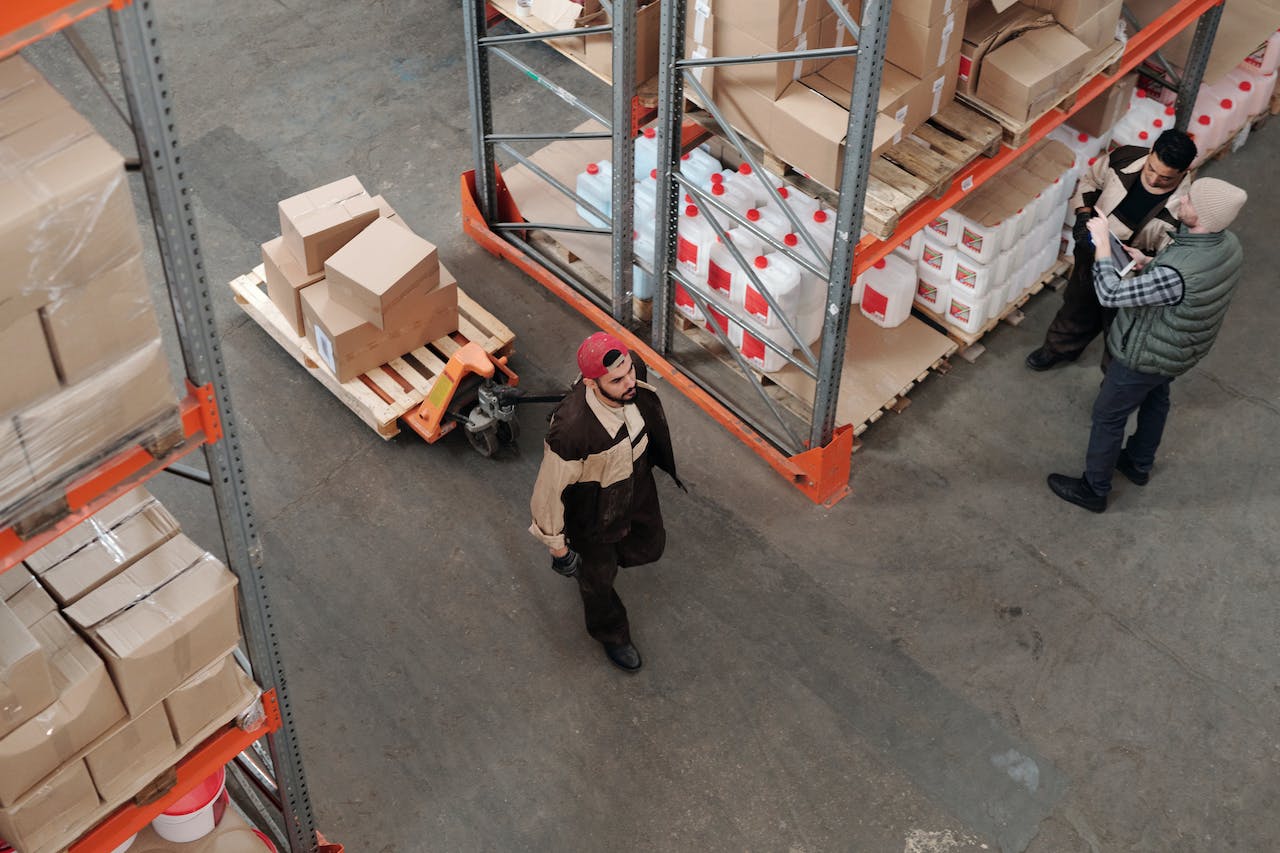Introduction
Cross-border liquid cargo transportation poses unique challenges that demand innovative solutions. In this era of global trade, optimizing logistics becomes paramount for businesses involved in transporting liquid products from one country to another. One such key innovation transforming the efficiency and cost-effectiveness of this process is the use of Intermediate Bulk Container (IBC) Tote Liners. These liners play a crucial role in safeguarding liquid cargo, preventing contamination, minimizing product loss, and streamlining loading and unloading procedures.
As we delve into the intricate landscape of cross-border liquid cargo logistics, this article explores how IBC Tote Liners have emerged as indispensable assets for businesses engaged in the transportation of liquid goods, specifically from Canada to Massachusetts. Through a detailed examination of their benefits, best practices, and real-world examples, we uncover the ways in which IBC Tote Liners contribute to a smoother and more secure journey for liquid products, backed by relevant statistics and data.
IBC Tote Liners: Enhancing Liquid Cargo Transportation
Inner containers, also known as IBC Tote Liners, are specialized liners designed to fit inside Intermediate Bulk Containers (IBCs), providing an additional layer of protection for liquid cargo. Their primary purpose is to optimize the transportation of liquid products, offering several key advantages that significantly impact the efficiency and cost-effectiveness of cross-border logistics.
Advantages of IBC Tote Liners
1. Contamination Prevention: IBC Tote Liners act as a barrier, shielding the liquid cargo from external contaminants during transportation. This is particularly crucial for industries where product purity is paramount.
2. Reduced Product Loss: The use of IBC Liners minimizes the risk of product loss by preventing leakage and spillage. This not only safeguards the integrity of the cargo but also contributes to cost savings by reducing waste.
3. Streamlined Loading and Unloading: The design of IBC Liners facilitates smooth loading and unloading processes. The liners are often equipped with features such as easy-fill spouts and discharge valves, enhancing operational efficiency.
As we explore further, these advantages play a pivotal role in addressing the challenges inherent in cross-border liquid cargo transportation, making liners a strategic choice for businesses seeking reliability and optimization in their logistics operations.
The Challenges of Cross-Border Liquid Cargo Transportation
Crossing international borders with liquid cargo introduces a host of challenges that can compromise the integrity and efficiency of the transportation process. Common challenges include navigating complex regulatory landscapes, potential delays at customs, and the need for adherence to diverse safety standards. One of the most pressing concerns is the impact of contamination on product quality. Contamination can arise from external factors such as exposure to air, moisture, or incompatible substances during transit. This not only jeopardizes the quality of the liquid cargo but can also result in regulatory non-compliance.
Addressing product loss in transit is another critical challenge. Traditional methods of liquid cargo transportation are often susceptible to leakage and spillage, leading to significant product loss. Additionally, inefficiencies in loading and unloading processes can contribute to delays, adding to the overall logistical complexities. It’s in this landscape of challenges that the role of IBC Tote Liners becomes paramount.
Efficiency and Cost-Effectiveness with IBC Tote Liners
Comparative Analysis: Traditional vs. IBC Tote Liner Transportation
A comparative analysis between traditional liquid cargo transportation methods and those employing IBC Tote Liners reveals stark differences in efficiency and cost-effectiveness. Traditional methods often involve drums or barrels, which are more prone to leakage and spillage. In contrast, IBC Tote Liners provide a sealed and secure inner container, significantly reducing the risk of product loss.
Time Efficiency in Logistics Management
Time is a critical factor in cross-border transportation. IBC Tote Liners, with their streamlined loading and unloading processes, contribute to time efficiency. The ease of handling, filling, and discharging liquid cargo using IBC Tote Liners accelerates the overall logistics timeline, minimizing transit times and ensuring timely deliveries.
Long-Term Cost Savings and Return on Investment
Investing in IBC Tote Liners translates into long-term cost savings for businesses. While the initial investment may seem higher than traditional methods, the reduction in product loss, minimized risk of contamination-related issues, and streamlined logistics processes result in significant overall savings. The return on investment becomes evident not just in monetary terms but also in enhanced operational efficiency and customer satisfaction, reinforcing the value of IBC Tote Liners in the realm of cross-border liquid cargo transportation.
Best Practices for Logistics Management with IBC Tote Liners
Implementing best practices in logistics management is crucial when incorporating IBC Tote Liners into the liquid cargo transportation process. Adhering to these practices ensures a smooth and secure journey for liquid products from Canada to Massachusetts.
- Proper Handling and Installation of IBC Tote Liners: Begin with the fundamentals. Proper handling and installation of IBC Tote Liners are essential for their effectiveness. Training personnel on correct installation procedures minimizes the risk of damage and ensures the liners perform optimally throughout the transportation journey.
- Monitoring and Quality Control Throughout the Journey: Continuous monitoring is key to identifying any issues promptly. Implementing a robust system for real-time monitoring and quality control ensures that any deviations from the optimal conditions are detected early, allowing for timely corrective actions.
- Ensuring Compliance with Cross-Border Regulations: Cross-border transportation involves navigating a complex web of regulations. Ensuring compliance with these regulations is imperative for a seamless journey. IBC Tote Liners should meet or exceed the required standards to avoid delays at customs and legal complications.
- Collaborative Approaches with Stakeholders for a Seamless Process: Collaboration is essential in the world of logistics. Establishing strong partnerships with stakeholders, including suppliers, carriers, and regulatory bodies, contributes to a seamless transportation process. Effective communication and collaboration help anticipate challenges and find proactive solutions.
Environmental Considerations and Sustainability
As businesses increasingly prioritize sustainability, the environmental impact of transportation methods comes under scrutiny. IBC Tote Liners, with their innovative design, also align with sustainable practices in several ways.
- Materials Used in IBC Tote Liners: IBC Tote Liners are typically constructed from materials that are durable, yet environmentally friendly. The choice of materials reflects a commitment to reducing the ecological footprint associated with single-use packaging, contributing to a more sustainable supply chain.
- Recycling and Disposal Practices: The recyclability of IBC Tote Liners adds an environmentally conscious dimension to their usage. Companies can implement recycling programs to responsibly dispose of used liners, further reducing waste and promoting a circular economy.
- Aligning with Sustainable Transportation Principles: Beyond the direct impact on liquid cargo, IBC Tote Liners contribute to sustainable transportation practices. Their efficiency in reducing product loss minimizes waste, and the overall streamlined logistics process aligns with the broader goal of sustainable and eco-friendly supply chain management.
Conclusion
In the realm of cross-border liquid cargo transportation, the adoption of IBC Tote Liners emerges as a transformative solution, addressing the challenges of contamination, product loss, and inefficiencies in logistics. Backed by a comparative analysis highlighting their efficiency and cost-effectiveness, coupled with best practices in logistics management, IBC Tote Liners prove instrumental in ensuring a secure journey for liquid products. Moreover, their alignment with sustainable principles positions them as not only a pragmatic choice for businesses but also a step towards eco-conscious supply chain practices. As industries navigate the intricate landscape of international trade, IBC Tote Liners stand as a reliable asset, optimizing liquid cargo logistics for enhanced efficiency and sustainability.


